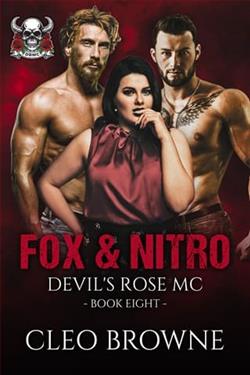Page 91 of The Last Days of Marilyn Monroe
On being objectified: “Sometimes I’m invited places to kind of brighten up a dinner table like a musician who’ll play the piano after dinner, and I know you’re not really invited for yourself. You’re just an ornament.”
On respecting the artistry of her craft: “An actor is not a machine, no matter how much they want to say you are. Creativity has got to start with humanity and when you’re a human being, you feel, you suffer.”
“I was never used to being happy, so that wasn’t something I ever took for granted,” she tells Meryman. “Fame to me certainly is only a temporary and a partial happiness, even for awaif and I was brought up a waif. But fame is not really for a daily diet, that’s not what fulfills you. It warms you a bit but the warming is temporary. It’s like caviar, you know, it’s good to have caviar but not when you have it every meal every day.”
And if fame leaves her?
“If it goes by, I’ve always known it was fickle. So at least it’s something I experienced, but that’s not where I live.”
Two days later, as agreed, Meryman brings over the final draft of his story, “Marilyn Lets Her Hair Down About Being Famous,” for approval. Marilyn has it ready when he returns later that day, with only a few small changes penciled in.
She’s pleased with the story and appreciates how Meryman’s captured her voice. “Hey, thanks,” she calls out as he departs.
George Barris and Marilyn first met on the set ofThe Seven Year Itch,when he photographed her in and around New York City.
NowCosmopolitanmagazine has commissioned a photographic essay, and he approaches Marilyn about collaborating on a series of sessions and interviews.
“Are you happy or unhappy?” Barris asks.
“I think I’m human,” Marilyn says. “I have my down moments, but I’m also robust. I think I’m more robust than down … I’m human.”
Barris makes her words the theme of the shoot. “She would hide nothing in our photos. No magic, no makeup or retouching of our finished photographs.”
She asks Barris to select some costumes and props.
“Off to Saks,” he writes, “for a bulky sweater, terry cloth three quarter hooded beach jacket, a blanket, a large towel for those peek-a-boo beach shots, and a sexy bikini. I did not buy Marilyn any undergarments—she never wore them.”
Marilyn also brings some of her own clothes, including a sweater that she purchased in February at a market in Toluca, Mexico.
Friday, July 13, is the final day of the shoot. This time on Santa Monica Beach at sunset.
The low-lying gray clouds create a moody, almost mysterious effect. And the shifting natural light should perfectly capture an enigmatic movie star in the throes of a metamorphosis.
The real Marilyn Monroe, the real Norma Jeane. That’s who Barris is looking to meet on the beach that day.
And he does.
She projects such joy when the camera’s on,Barris muses.The world can’t forget her face.
The sun is setting and the temperature dropping as he shoots down to his very last roll of film. Even the champagne he’s brought as fortification is losing its effect. He sees Marilyn shivering but she never complains.
The last photo he takes is of Marilyn bundled in her Mexican sweater, her blond hair blowing in the sea breeze.
Her face softens with affection, and her lips pucker, as if to blow him a kiss.
“This one’s for you, George,” she says.
When Marilyn and George Barris meet at her home to review the photos he’s taken, she spends five hours looking carefully at each one, using a red pencil to cross through her rejections.
“I’m in your hands now,” Marilyn says. “I trust you.”
“Don’t worry,” Barris says. “I’ll never hurt you. When this is published, there won’t be any changes.”
CHAPTER 65
ON THE SAME Friday the thirteenth as the Santa Monica Beach photo shoot, a report lands on FBI Director J. Edgar Hoover’s desk from the FBI office in Mexico City.
The memo is labeled “MARILYN MONROE—SECURITY MATTER —C [Communist].”















